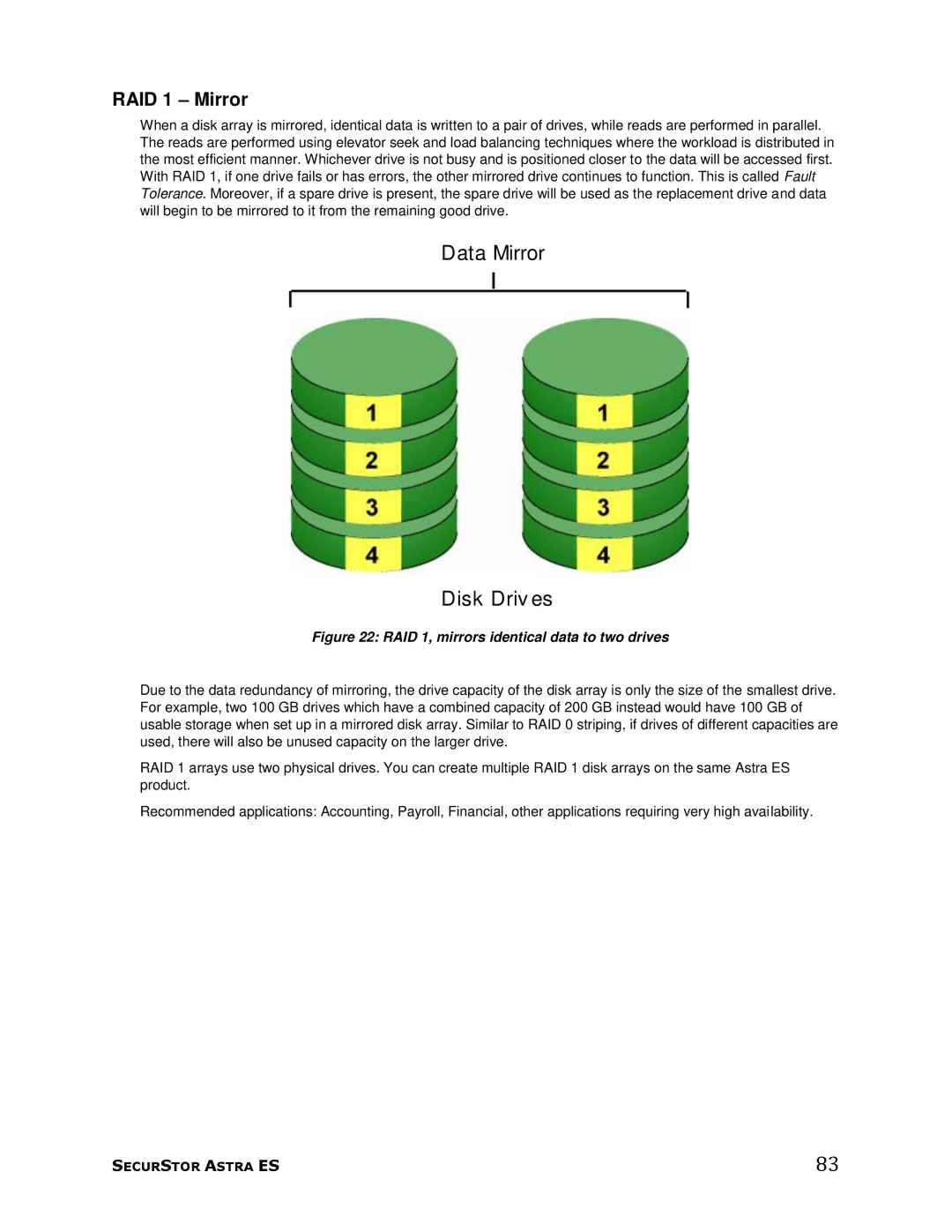
RAID 1 – Mirror
When a disk array is mirrored, identical data is written to a pair of drives, while reads are performed in parallel. The reads are performed using elevator seek and load balancing techniques where the workload is distributed in the most efficient manner. Whichever drive is not busy and is positioned closer to the data will be accessed first. With RAID 1, if one drive fails or has errors, the other mirrored drive continues to function. This is called Fault Tolerance. Moreover, if a spare drive is present, the spare drive will be used as the replacement drive and data will begin to be mirrored to it from the remaining good drive.
Data Mirror
Disk Driv es
Figure 22: RAID 1, mirrors identical data to two drives
Due to the data redundancy of mirroring, the drive capacity of the disk array is only the size of the smallest drive. For example, two 100 GB drives which have a combined capacity of 200 GB instead would have 100 GB of usable storage when set up in a mirrored disk array. Similar to RAID 0 striping, if drives of different capacities are used, there will also be unused capacity on the larger drive.
RAID 1 arrays use two physical drives. You can create multiple RAID 1 disk arrays on the same Astra ES product.
Recommended applications: Accounting, Payroll, Financial, other applications requiring very high availability.
SECURSTOR ASTRA ES | 83 |
